TechRadar Verdict
If you're heavily invested in Amazon's ecosystem, or want a hassle free (yet limited) UI, the Kindle HDX 7 could be the perfect tablet, but anyone looking for flexibility in their slate needs to look elsewhere.
Pros
- +
Mayday is innovative
- +
Great screen
- +
Fast performance
Cons
- -
Dark spots on screen
- -
Poor browser
- -
Dated games
Why you can trust TechRadar
The tablet as we know it has existed for only three years and we already have plenty of tired old cliches about them. The first is that they're media consumption machines, built only for taking in movies and leafing through magazines.
Tell that to the legions of suit and tie types running their empires via iPad and keyboard dock. The finest tablets, devices like the Apple's iPads, Google's Nexus tablets and Sony's Xperia Tablet Z, are versatile machines with lush ecosystems and sleek hardware that's a pleasure to hold.
It's a rock-bottom option as well in terms of price: £199 for the 16GB model, £229 for 32GB and £259 for the 64GB if you're willing to have the special offers on the lock screen to reduce the cost by a tenner.
Amazon's Kindle Fire HDX comes close to standing among those champion slates. With its pixel rich screen, speedy guts and compact frame it's Amazon's answer to the iPad mini 2 with Retina and the Nexus 7. But instead of being the Jack of all trades you might hope for, it ends up as that cliche device that's built more for pleasure, and purchasing, than anything else.
It's a high speed gateway to Amazon's world of stuff, all of it ready to ship right to your door, as well as music, movies and games to download or stream. Those one touch purchases are dangerously convenient, especially if you're an Amazon Prime member.
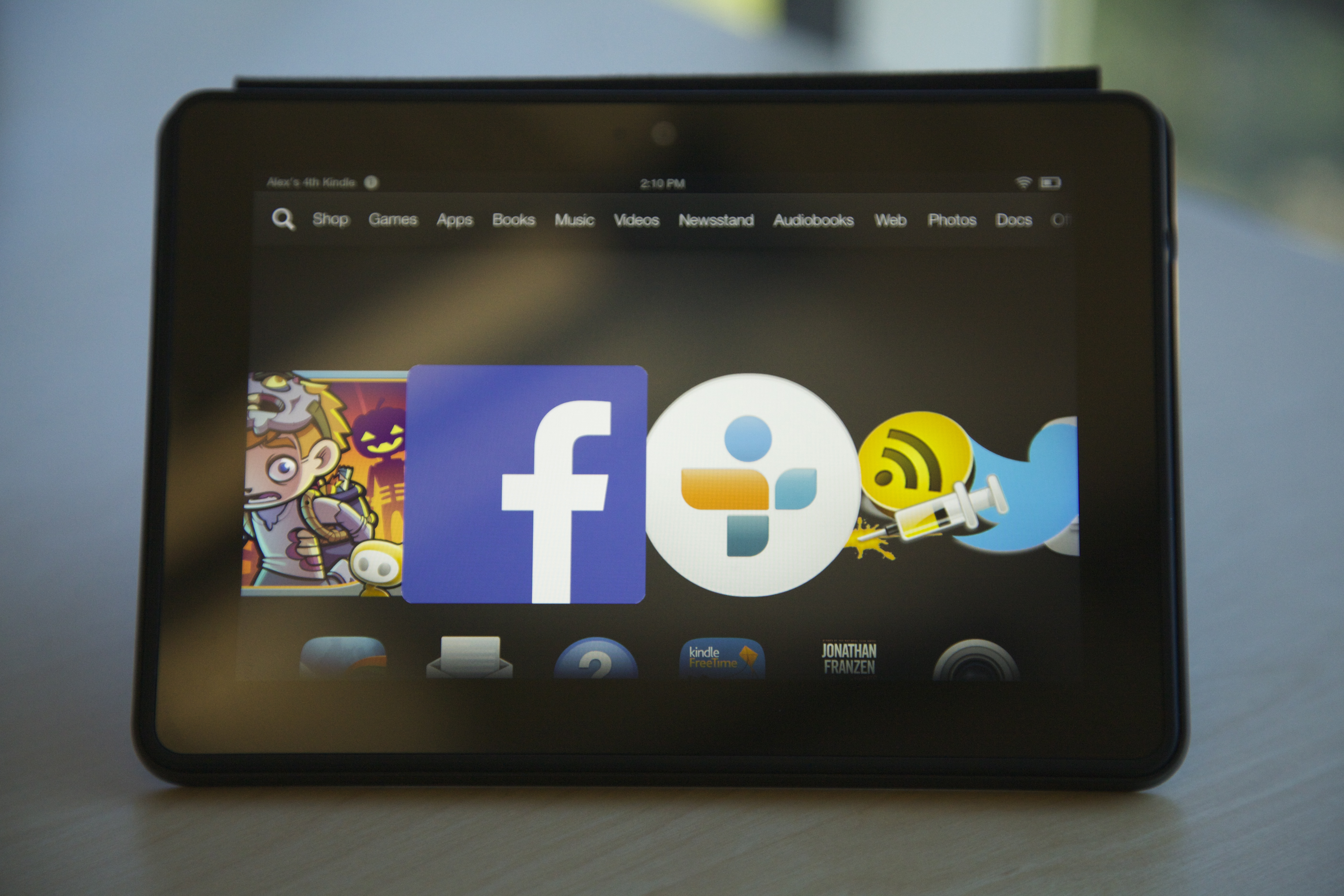
The tablet world moves fast and Amazon is iterating just as quickly as the competition. So far its matched the yearly refresh rate of Google and Apple, debuting the Kindle Fire HDX only twelve months after the first Kindle Fire HD. My those tablets grow up fast.
Amazon currently makes the best ereader on the market, the near perfect Kindle Paperwhite. It's mopped up all competition from Nook and the like, but the 7-inch tablet is a different sort of game.
Sign up for breaking news, reviews, opinion, top tech deals, and more.

With the Kindle Fire HDX, it's also built an excellent Android tablet, from a hardware perspective, at least. But while it's lightning fast and a great way to enjoy books, magazines, comics, music and movies, it comes up short in the places where the best tablets truly impress: third-party apps and a whiz bang customizable interface.
Amazon has all the media you crave, plus tube socks and cat food at rock bottom prices. It's built a great tablet, an Android one despite what its Fire UI wants you to think. But while it excels at getting out of the way so you can read, watch and buy, buy, buy, is it lagging behind the feature curve set by Google and Apple? Let's break it down.
Design
The 7-inch Kindle Fire HDX is no supermodel, but it is better looking than its predecessor, the brickish Kindle Fire HD.
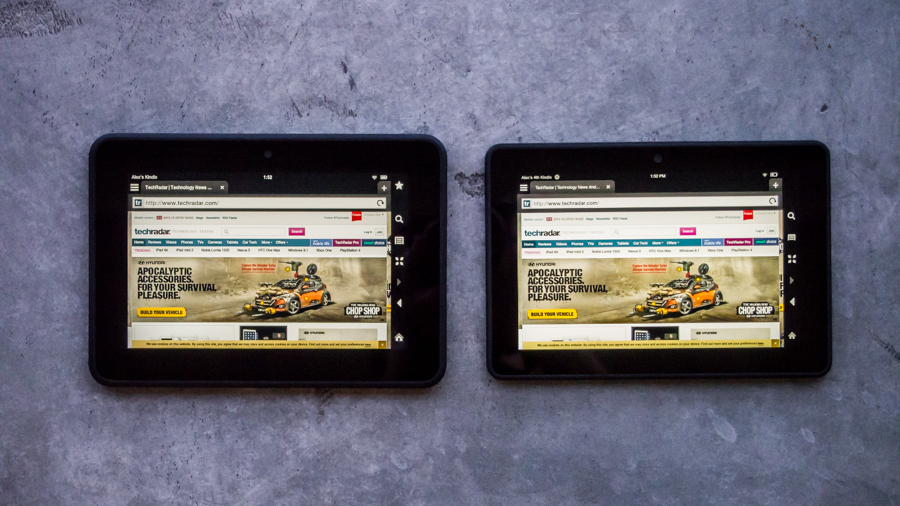
A bit of thickness has been shaved off its frame, giving it a depth of .35 inches, whereas the old HD was .4 inches.
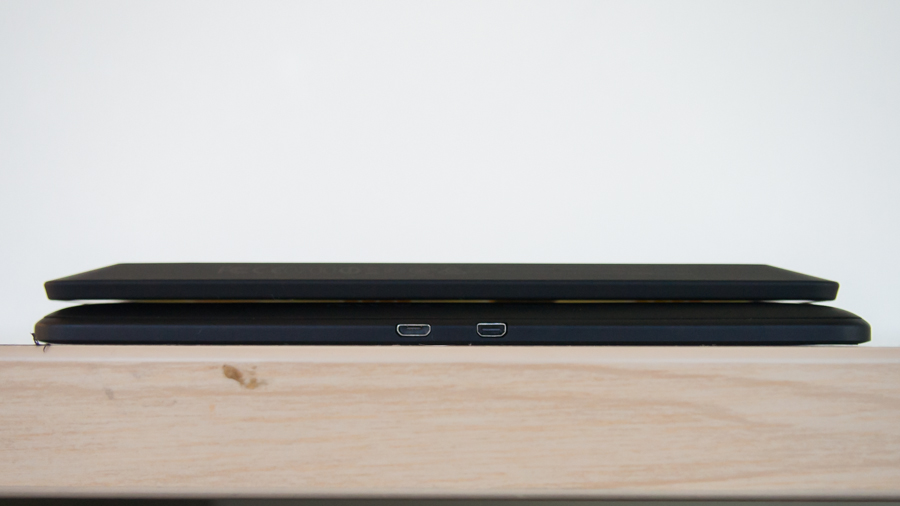
It's still a bit dull looking, especially from the front. The rear is actually more attractive, with subtly shiny black plastic and tapered, sloping edges.
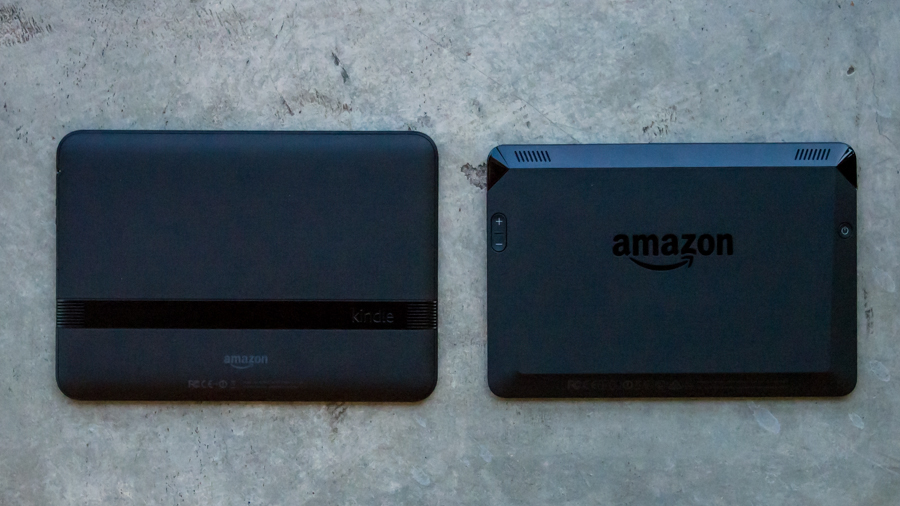
It's built from the same soft touch plastic material as the Kindle Paperwhite. It's pleasant to hold and grippy without feeling sticky.
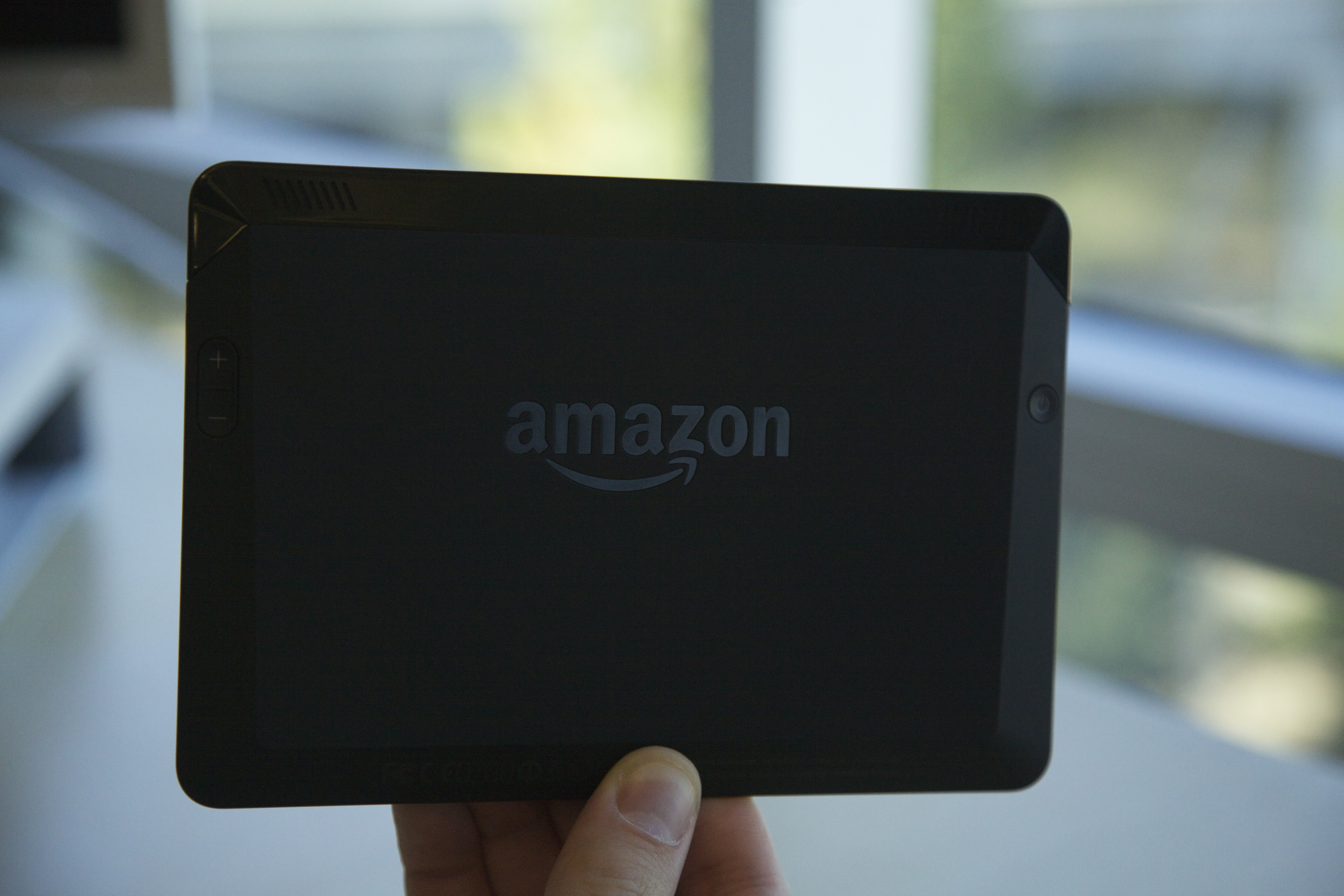
It weighs just 10.7 ounces, so it's light enough to carry day to day without adding much weight to your bag. Its overall dimensions are 7.3 x 5 x .35 inches, making it easy to hold in one hand, but too large for a pocket.
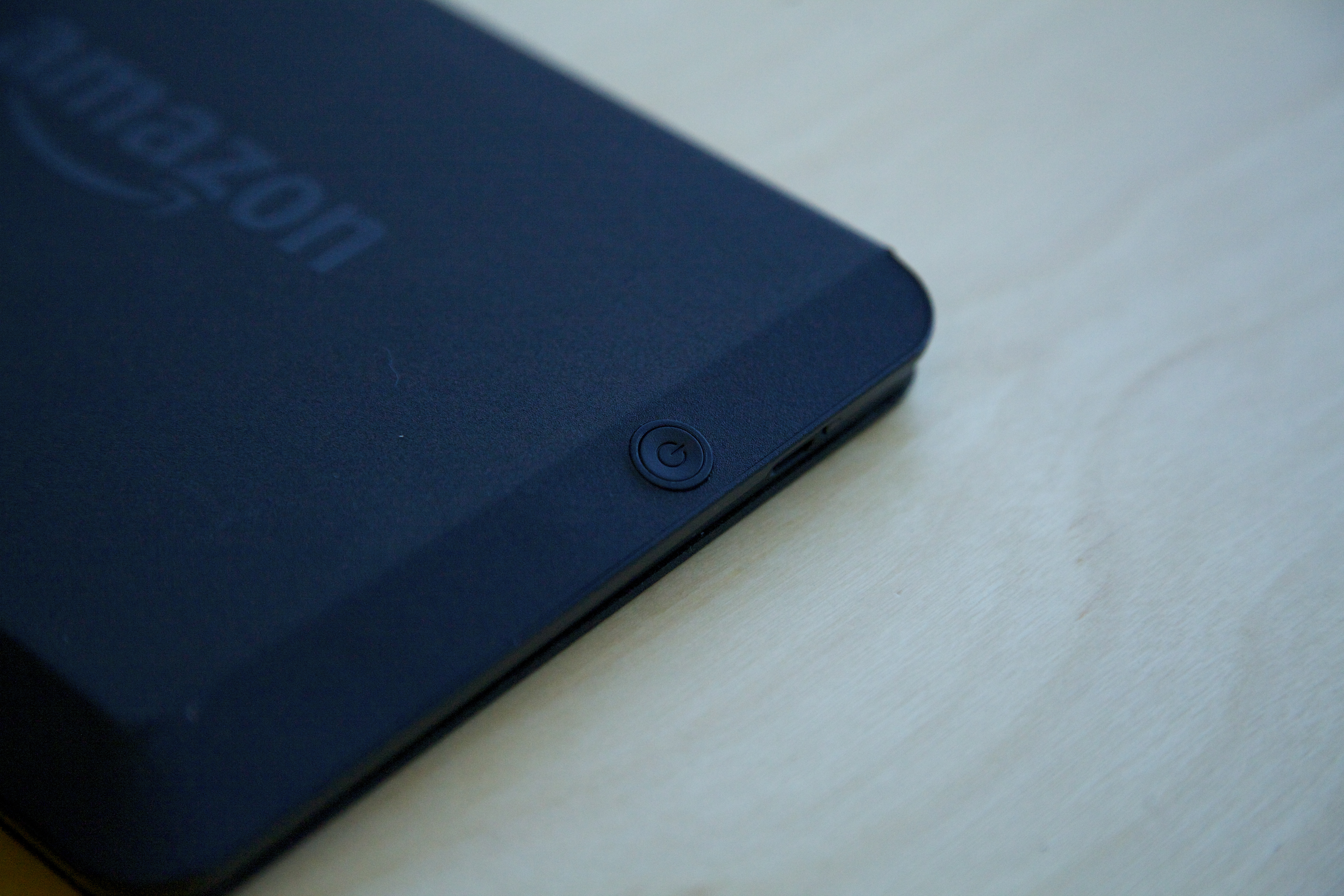
Amazon opted to place the power button and the volume rocker on rear of the HDX. They're clicky and easy to press, but despite their sunken design, it's often hard to locate them. We frequently mixed up where they were, especially when holding the HDX in portrait orientation.
The requisite 3.5 mm headphone jack is found on the right side, and a microUSB is on the left. Both do their jobs while keeping cords from trailing over the display. There's also a front facing camera above the screen, but no camera on the back.
Overall, it's a functional, but less than eye catching design. It looks like something a power tool company would design, a construction worker's tablet, until you light up that screen. This is one of the places where Amazon's hardware stands toe to toe with the competition.

The 7-inch LCD display rocks a resolution of 1920 x 1200 and an intense pixel density 323 ppi. Though seven inches isn't a ton of visual real estate (this is a "mini" tablet, after all), it makes movies look magnificent and keeps text nice and crisp. It's bright, colorful and among the best tablet displays on the market.
When we reviewed the Paperwhite, we bumped up against the limitations of a black and white display when trying to read comics or books with photographs. That's in no way an issue here, the Kindle Fire HDX makes all your Amazon purchases look incredible. Of course, it's more draining on the eyes than an e-ink display, but certainly the more versatile device of the two.
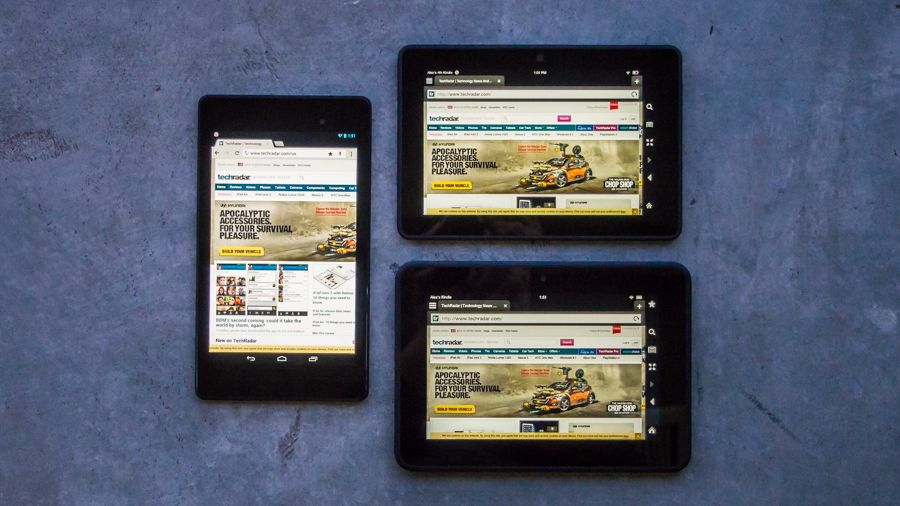
Its backlight is a bit less powerful than that of the Nexus 7, but in day to day use that won't matter much, unless you're prone to browsing in a completely dark room. We detected only one little flaw, a bit of black shadow along the display's edge. It's only visible when reading something with a completely white background like an ebook. Still, it's a rather disappointing bit of quality control, like the dark spots that appeared on the first Paperwhite, but were gone by the second iteration.
Other than those dark spots, it stands among the best tablet displays on the market. Holding it next to a Nexus 7 or any Retina iPad, you'd be hard pressed to notice a difference, so it doesn't best the competition, but watching a film on an HDX is just as nice as on any high-density 7-inch tablet.

The HDX has fine speakers as well. They're mounted on the back of the tablet, near the top, so it's easy to hold the tablet without covering them up.
We've heard louder sound on other tablets, but even at maximum volume, the HDX is free from the distortion that sometimes popped up on last year's model. It doesn't scream, but it's good enough to watch videos outside in a park without switching on the subtitles.
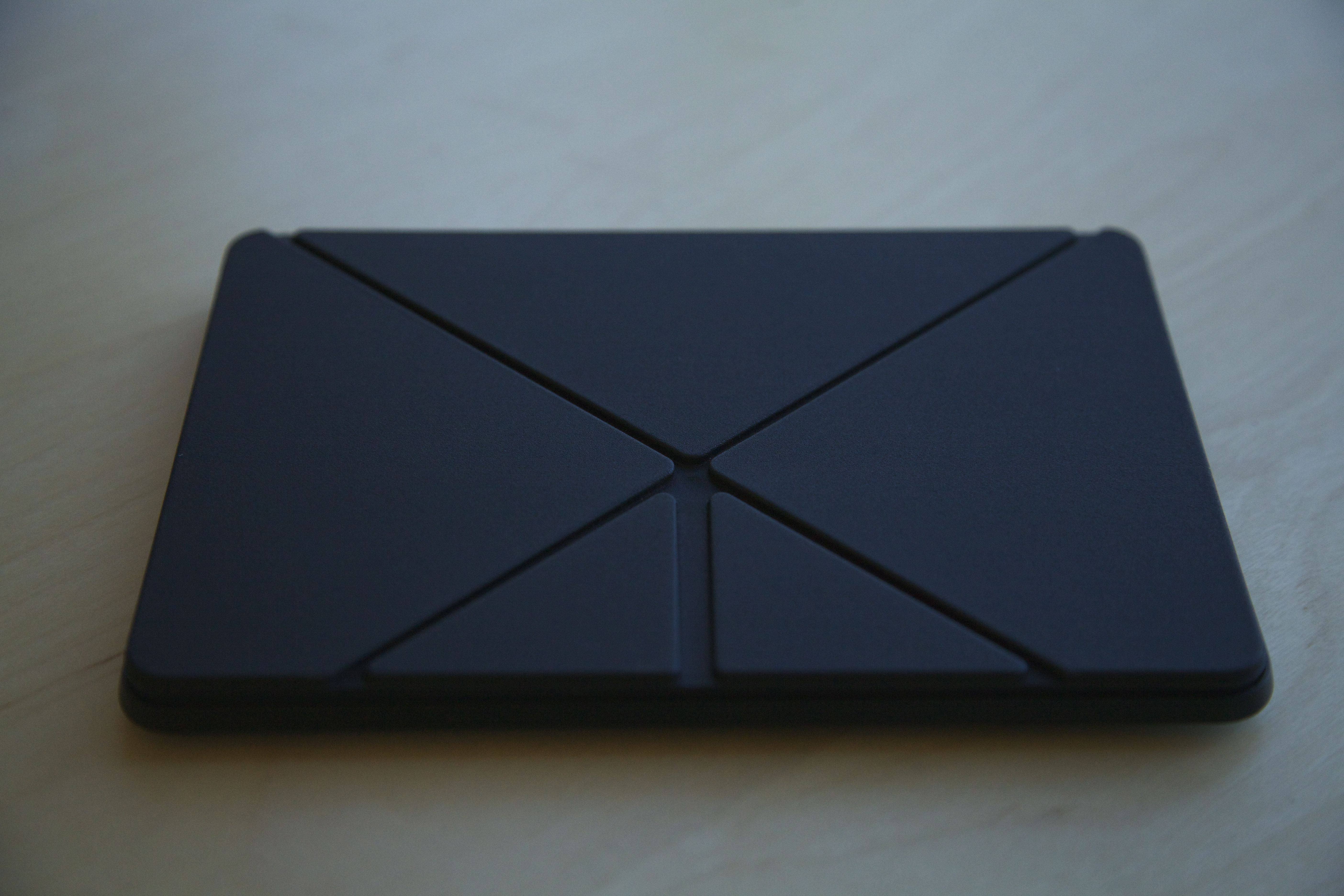
We don't often talk about accessories in a device review, but the origami case sold by Amazon deserves a shout out. It's quite expensive at £45 for plastic and £50 for leather, but it's a really elegant combination of protective cover and stand.

When closed up, it lays flat across the display and the rear, shielding it from scuffs and scratches while adding little to the devices bulk. It converts to a stand by folding the flap back and pinching it together. It holds it at a perfect horizontal angle for movie watching, and keeps it upright in portrait mode as well, though with a slight lean.
The cover sticks to the rear with a magnet of impressive strength. You can hold it by the flap and give it a shake without causing a tumble. If you're buying an HDX, you really ought to consider some sort of cover, if not this one. No one likes a scratched tablet.

Gareth has been part of the consumer technology world in a career spanning three decades. He started life as a staff writer on the fledgling TechRadar, and has grew with the site (primarily as phones, tablets and wearables editor) until becoming Global Editor in Chief in 2018. Gareth has written over 4,000 articles for TechRadar, has contributed expert insight to a number of other publications, chaired panels on zeitgeist technologies, presented at the Gadget Show Live as well as representing the brand on TV and radio for multiple channels including Sky, BBC, ITV and Al-Jazeera. Passionate about fitness, he can bore anyone rigid about stress management, sleep tracking, heart rate variance as well as bemoaning something about the latest iPhone, Galaxy or OLED TV.
